
2022 has brought with it some exciting new tiny home designs! Sustainability has been running on everybody’s mind. Ever since the pandemic shook up our world, we’re trying to incorporate sustainability into every aspect of our life, including our homes! And, with everyone aspiring toward’s eco-friendly and mindful ways of living, tiny homes have completely taken over the world of architecture and cemented their place as sustainable, minimal, and economical micro-living setups. What started off as a cute little trend is now turning into a serious option for home spaces. They are a space-saving and eco-friendly living solution that reduces the load on Mother Earth! They’re simple and minimal alternatives to the imposing and materialistic homes that seem to have taken over. And, we’ve curated a wide range of micro-home setups that totally grabbed our attention in the month of April! From a tiny timber home defined by biophilic design to a tiny home built from three shipping containers – there’s a tiny home out there for everyone!
1. Buster


Buster is located in Matamata, just a couple of hours away from Auckland, New Zealand. You will be able to hear the sound of spring river water flowing around you as you’re surrounded by trees, stones, valleys, and basically the joys of nature. It’s located below the Kaimai Range “amongst ancient native bush and farmland”. It is a tiny home perfect for one person or a couple who wants to temporarily or even permanently live in such an area and to have something that is built sustainably and with the environment and your comfort in mind.
Why is it noteworthy?
Instead of being made from timber, it uses black corrugate as it will last longer and can survive all the different kinds of weather that the area experiences. They also used plywood to bring “a sense of warmth” to the house and is in fact what is also used in the traditional kiwi trampers huts, giving you even more of a local feel but with modern conveniences. It’s a pretty good combination, having a more natural lodging but using sustainable technology and devices to give you comfort and function.
What we like
- Buster is powered by GridFree solar panels
- The house is oriented to the north so that it will be able to maximize the light during the summer and even during the winter
What we dislike
- The solar energy is only enough to power a small fridge, lights, and to charge your smartphones
2. N1
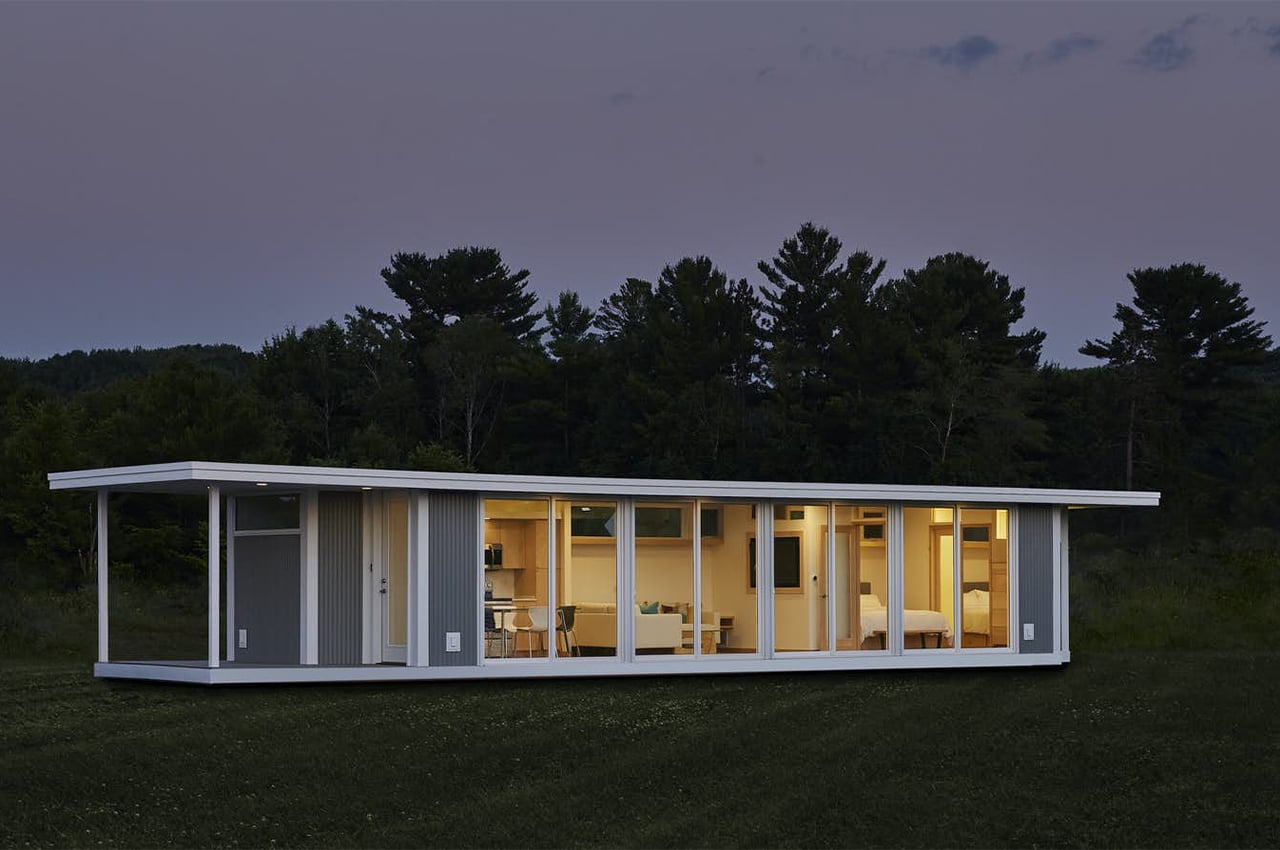
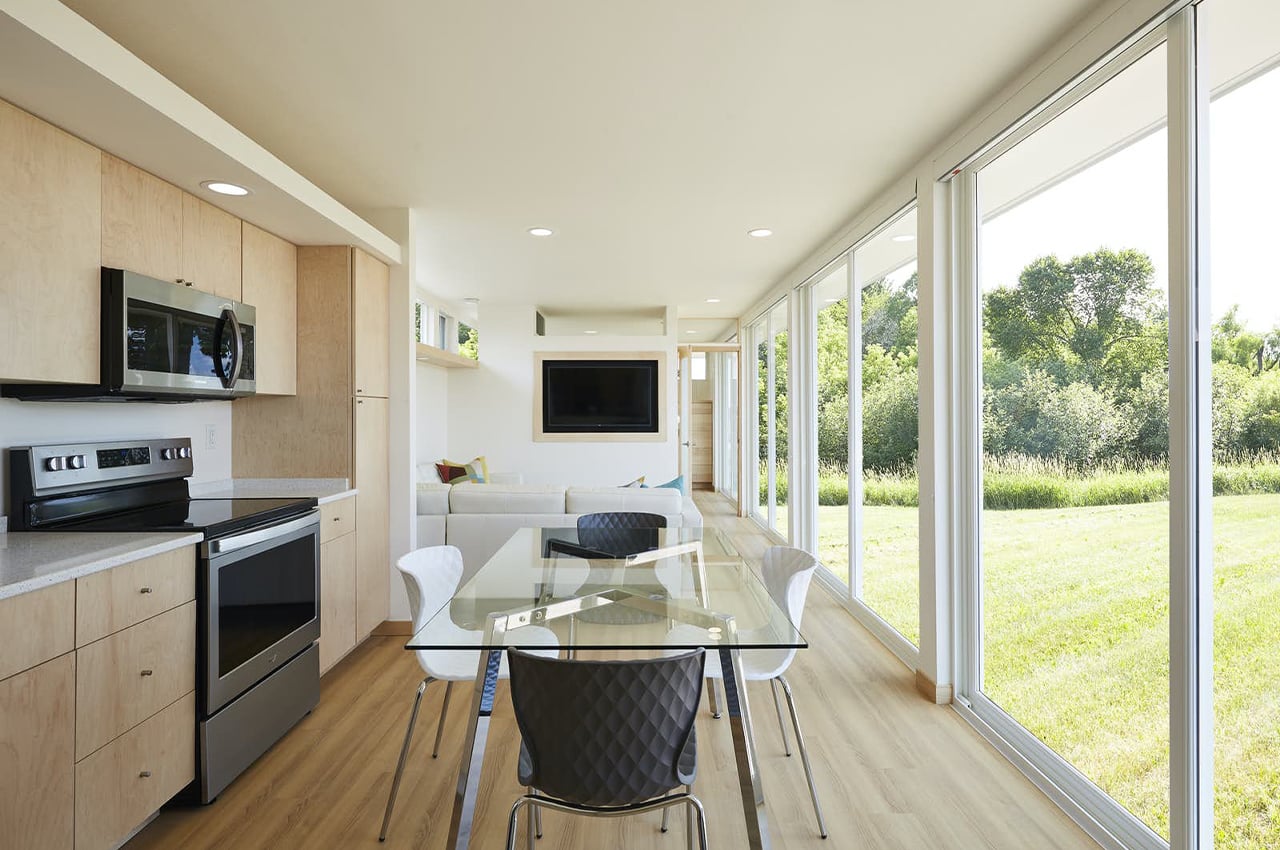
Inspired by the modernist architecture of Richard Neutra, Kelly Davis of SALA Architects designed a 500-square-foot, flat-roofed residence that’s defined by its 30-foot-long glass facade. Tiny home building company ESCAPE constructed the prefabricated tiny home called N1 in an effort to design their first midcentury building.
Why is it noteworthy?
Clad with metal and glass, N1’s transparent facade is meant to bring residents closer to the surrounding outdoors. While the wraparound glass facade supplies the home with an air of elegance, its primary purpose is to break the barrier between indoor and outdoor spaces while providing the home with practical solutions to natural weather conditions. The home’s gray metal siding and white poly roof covering are, “very strong and highly reflective so that it prevents heat buildup,” as ESCAPE founder Dan Dobrowolski explains.
What we like
- Breaks the barrier between indoor and outdoor spaces
- Scandinavian-inspired aesthetics
What we dislike
No complaints!
3. The Slope House
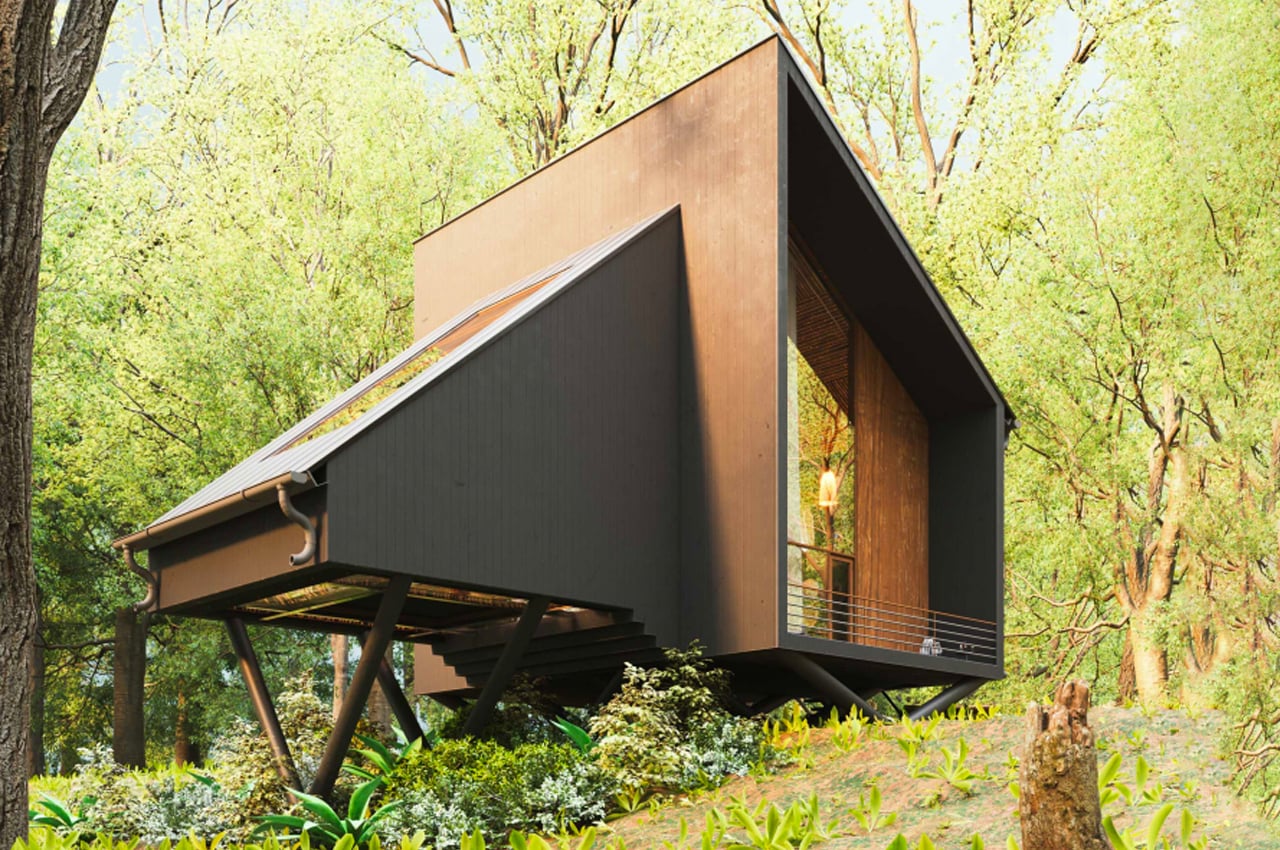

The Slope House from the 3D visualizer Milad Eshtiyaghi is an untraditional A-frame cabin that employs biophilic design inside and out. 3D visualizer and international architect Milad Eshtiyaghi has long been drawn to escapist hideaways perched on rugged, seaside cliffs and isolated cabins envisioned beneath the Northern Lights. Today, he turns his gaze to tiny cabins. A bit more quaint than treacherous, Eshtiyaghi’s latest 3D visualization finds an angular, timber cabin nestled atop an idyllic hillside somewhere in the rainforests of Brazil.
Why is it noteworthy?
Dubbed the Slope House, the timber cabin maintains a signature triangular frame that’s a thoughtful twist on the conventional A-frame cabin. Defined by two modules, one internal volume hosts the cabin’s bedroom while the other keeps the home’s main living spaces, like the dining area, kitchen, and den. The tiny cabin from Eshtiyaghi is envisioned propped atop a truss system that was specifically chosen to minimize the home’s impact on the preexisting landscape.
What we like
- A biophilic design style has been integrated into the cabin’s interior spaces
- Natural plants have been added inside the house as a small garden
What we dislike
- The theme and form of the home may be a bit too eccentric for some
4. My Cabin

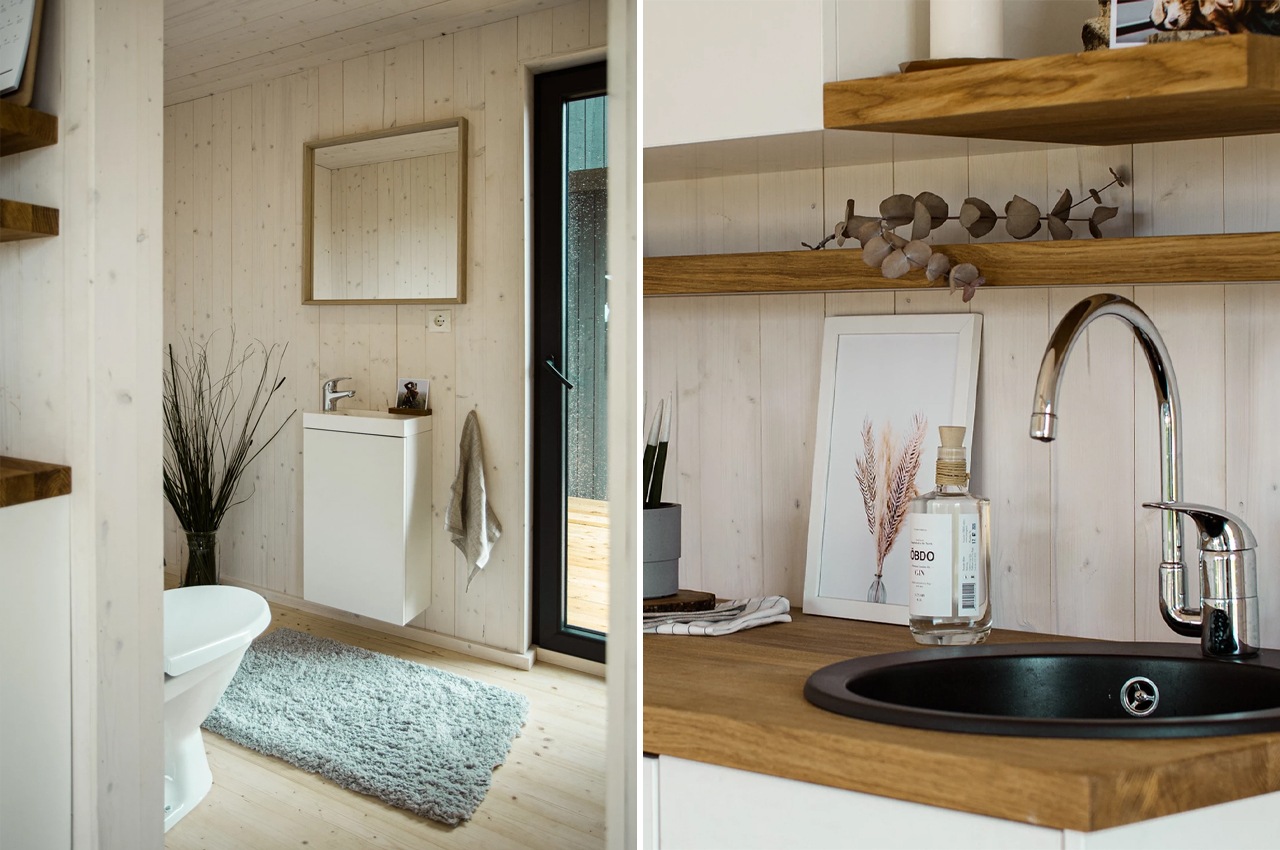
My Cabin is a series of prefabricated structures like a tiny home, a detached office for remote working, and even a sauna. Girts Draugs found all the rest and relaxation he was looking for in tiny, prefabricated homes. Surging in popularity due to stay-at-home orders, tiny homes have been around for a while but only recently took off. Our collective need to head back to nature has prompted many of us to find ways of staying there.
Why is it noteworthy?
While building a new home from scratch or renovating an old, dilapidated one are certainly options to make that happen, Draugs found more promise and more convenience in designing prefabricated homes. My Cabin, Draugs’s collection of prefabricated structures, features three types of dwellings: a home, sauna, and remote office.
What we like
- Each cabin is customizable, allowing buyers to choose their home’s finishes, window placements, doors, and furniture
What we dislike
No complaints!
5. Wattle Bank Home
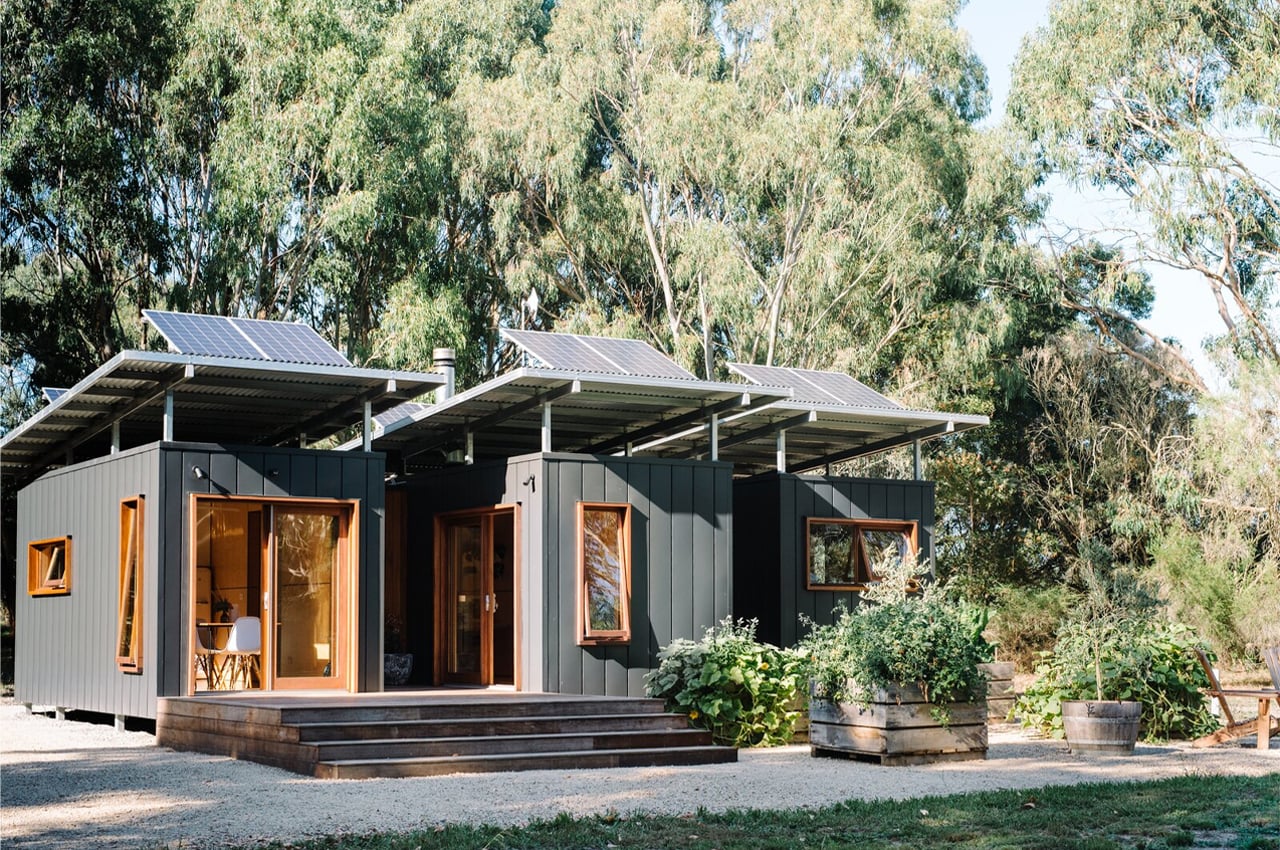

Situated on a plot of land on Amy’s parents’ farm, the couple’s Wattle Bank home was designed and built by the modular home building company, Modhouse, founded by Amy’s parents Mark and Melissa Plank. Each 20-foot shipping container that comprises the tiny home connects to one another via integrated passageways. These hallways also help make the most of the available living space by hosting utility rooms, like the laundry and entryways. Throughout the home, floor-to-ceiling entryways and windows give the feeling of indoor-outdoor living, adding some extra space to the interior as well.
Why is it noteworthy?
While downsizing our lifestyle requires letting go of many luxury comforts, it also makes room for simpler life pleasures. Sure, getting rid of the pool might hurt a little, but more green space allows for more plant cultivation and harvesting. For one Australian couple, Amy Plank and Richard Vaughan, downsizing meant disbanding from domestic duties for the freedom to surf, garden, and enjoy nature whenever and however they like. Hoping to make their dream of a downsized, sustainable lifestyle a new reality, Plank and Vaughan found the freedom they hoped for in shipping container architecture. Merging three shipping containers together to form a 530-square-foot tiny home, Plank’s and Vaughan’s Wattle Bank home fits the bill.
What we like
- Provides a feeling of indoor-outdoor living
- Built using eco-friendly materials
What we dislike
- Not much to distinguish it from other shipping container-based architecture out there
6. Legend Two X


The Legend Two from prefabricated architecture company Nestron is a prefab, tiny home that marries stylish design with classical elements. Today, the homebuilders at Nestron released the next generation of Legend Two, dubbed Legend Two X.
Why is it noteworthy?
Built as an extension to the Legend Two series, the X generation expands its preceding model by 7.9 square meters, for a total of 33.4 square meters. The builders at Nestron expanded the prefabricated tiny home to accommodate full-size appliances like refrigerators and washing machines without compromising the home’s available living space. Inspired by classic American architecture, the exterior of Legend Two X’s prefab homes keeps an approachable, elegant appearance while maintaining a bit of decorative restraint.
What we like
- Combines the traditional elements of classic American architecture with some mid-century modern and Scandinavian-inspired design elements
- The light tone used in the structure creates a lively and warm atmosphere
What we dislike
No complaints!
7. Riverside Cabin
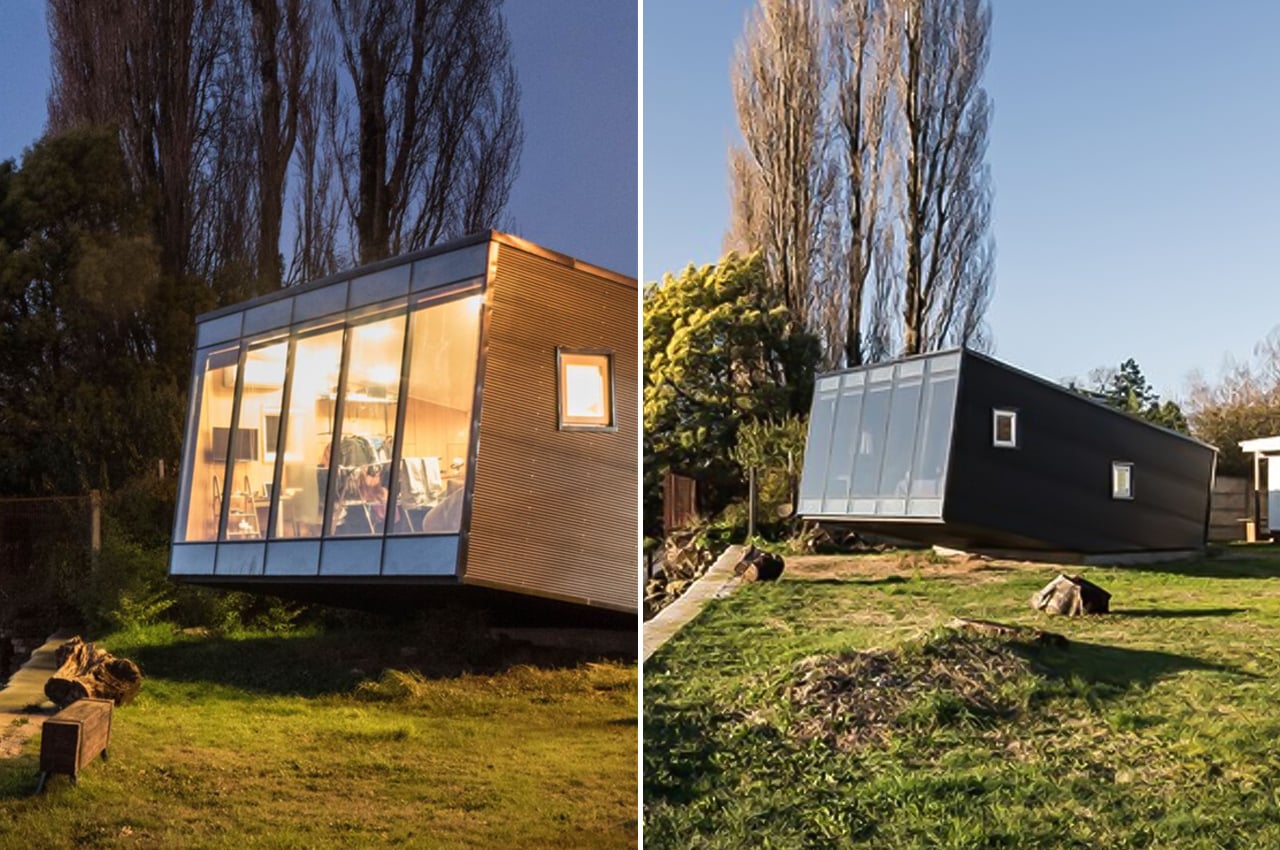
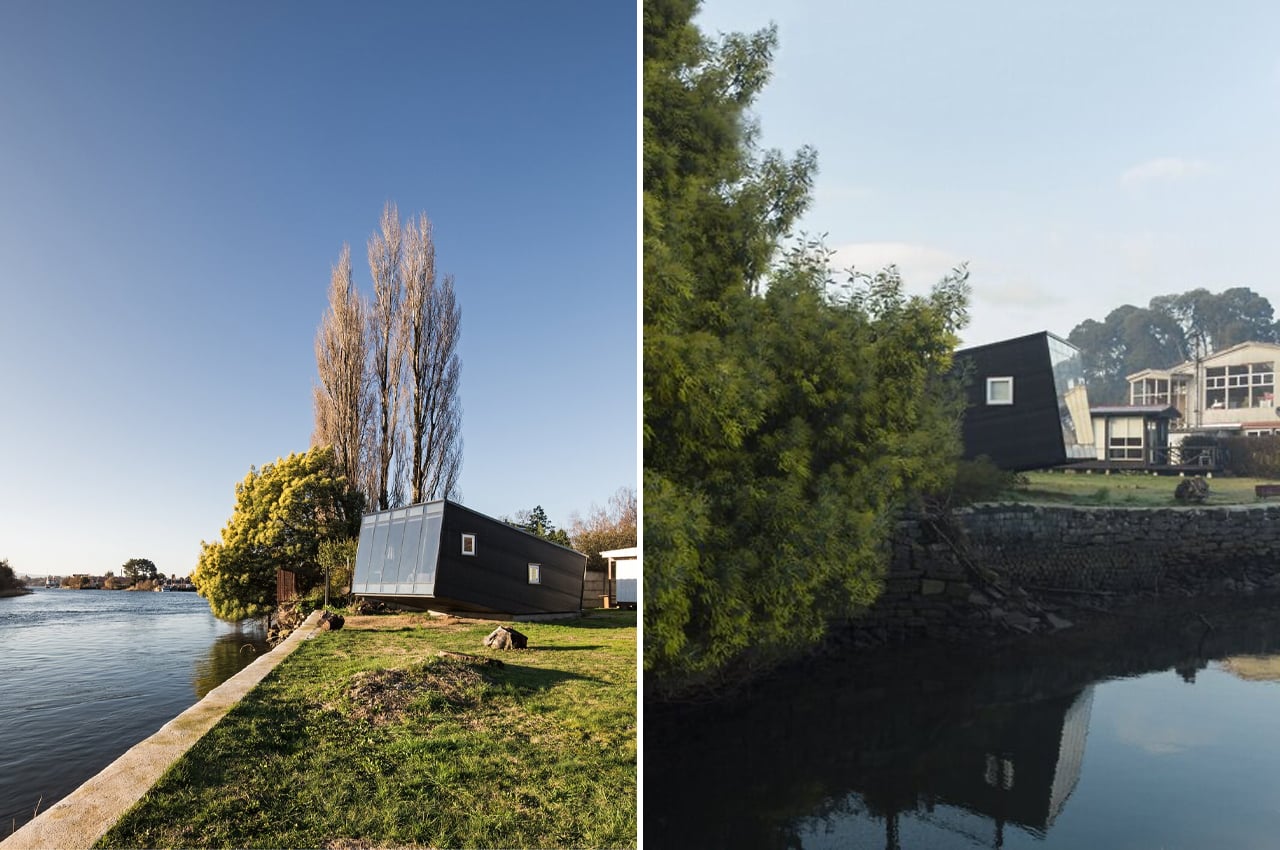
On the banks of the Calle-Calle River in Valdivia, Región de Los Ríos, architects with Arce & Westermeier were commissioned to design and construct a shelter to function as a local professor’s riverside retreat. Located close to the Universidad Austral de Chile, the tiny home is called Riverside Cabin after its harmonic relationship with the Calle-Calle River. Brimming from the natural treeline that extends along the river’s edge, Riverside Cabin takes on an unconventional shape that embraces the home’s surrounding landscape and ecosystems.
Why is it noteworthy?
In the initial stages of designing Riverside Cabin, the architects with Arce & Westermeier asked, “What kind of relationship with the river do we want: a traditional one, which seeks that each program enclosure manages to please itself with this unique geographical element? Or rather, one that selects where and how this visual pleasure is obtained?” Upon realizing they’d like to explore the latter, Arce & Westermeier found Riverside Cabin’s unique look. Tilting one end of the cabin towards the sky elongated the internal volume and gave the ceiling lofty heights to accommodate the bi-level interior.
What we like
- Blends in with the surrounding architecture, without taking away from the available views of the river
- Built using prefabricated metal plates that brace Chile’s rainy climate
What we dislike
- Not everyone may find the home’s unique shape and tilt appealing
8. Doméstico

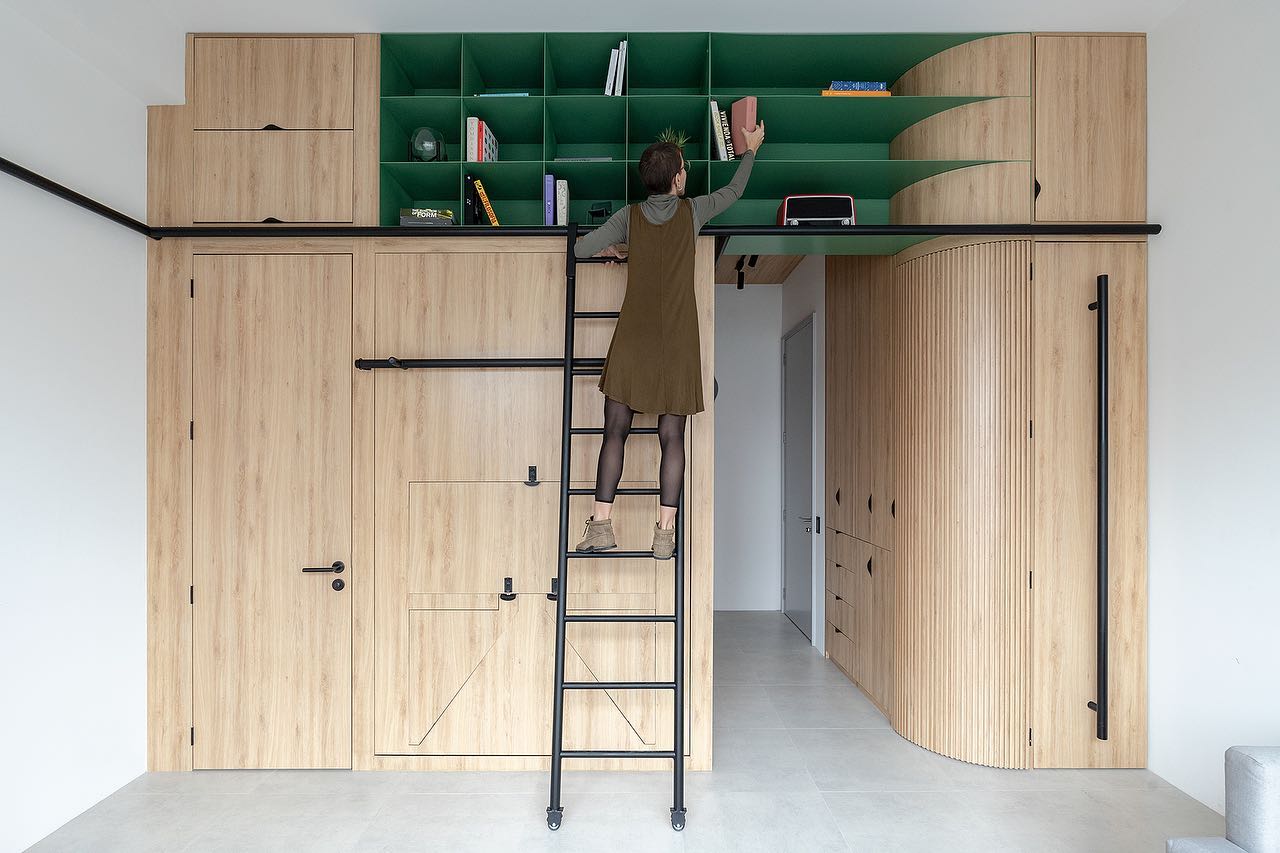
People who are switching to a more minimalist lifestyle are doing it slowly but surely. It is one big decision that will totally change your life. Architects Juan Alberto Andrade and María José Vascone know how living or working in a small space is a reality many people are facing today. The two have come up with a special design for a live-work space that offers both function and ample space for storage.
Why is it noteworthy?
Doméstico is a mini studio situated in the Qorner building in Quito, Ecuador. The building was designed by Moshe Safdie but for now, we’ll focus on the tiny studio built by two other designers. With a space of only 27.5 square meters (296 square feet), Doméstico offers comfort even while in a restricted space. It is mainly a home more than just a workspace so it can offer solutions to common living problems.
What we like
- The loft offers ample storage areas for a clutter-free home
- The layout is clever because it can accept independent modules that allow anyone to organize his space
What we dislike
No complaints!
9. IMAGO-iter

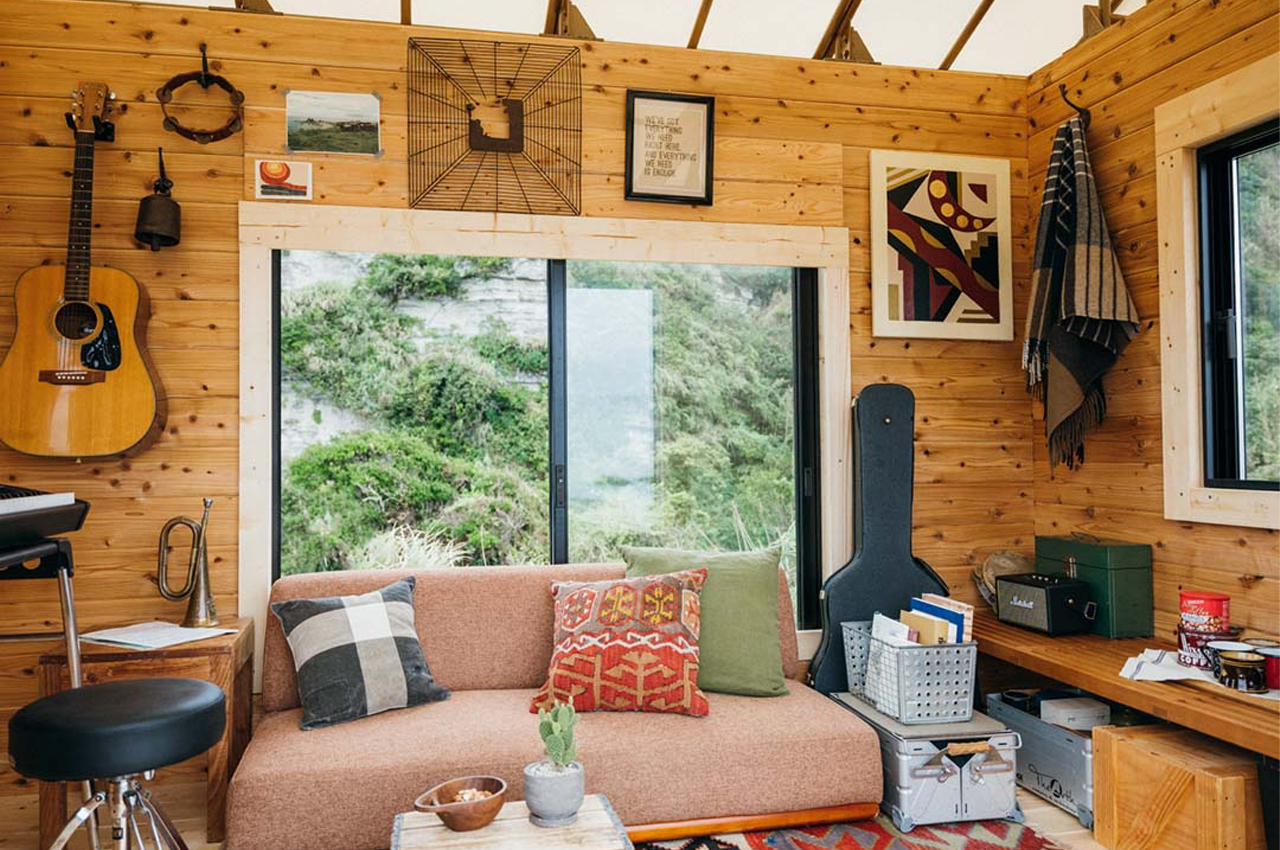
IMAGO-iter carries a 6.5m2 interior volume with 2.4 meters’ worth of headspace, providing just enough room for buyers to customize the space according to their needs. BESS took a customizable approach in designing every aspect of IMAGO-iter, so the mobile home is outfitted with only the bare essentials.
Why is it noteworthy?
Whether you use them as off-grid workspaces or campers on the go, mobile homes provide cozy getaways that we can bring wherever the wind takes us. BESS, a Japanese building firm that specializes in wooden houses, designed and constructed a mobile home called IMAGO-iter to join the party and move with our changing needs.
What we like
- You can choose between a traditional timber or a domed, wagon-like plastic membrane roof
- Suspension and electromagnetic brakes have also been worked into IMAGO-iter’s build to help ensure stable and safe driving
What we dislike
- Outfitted with only the bare essentials
10. Portable Cabin

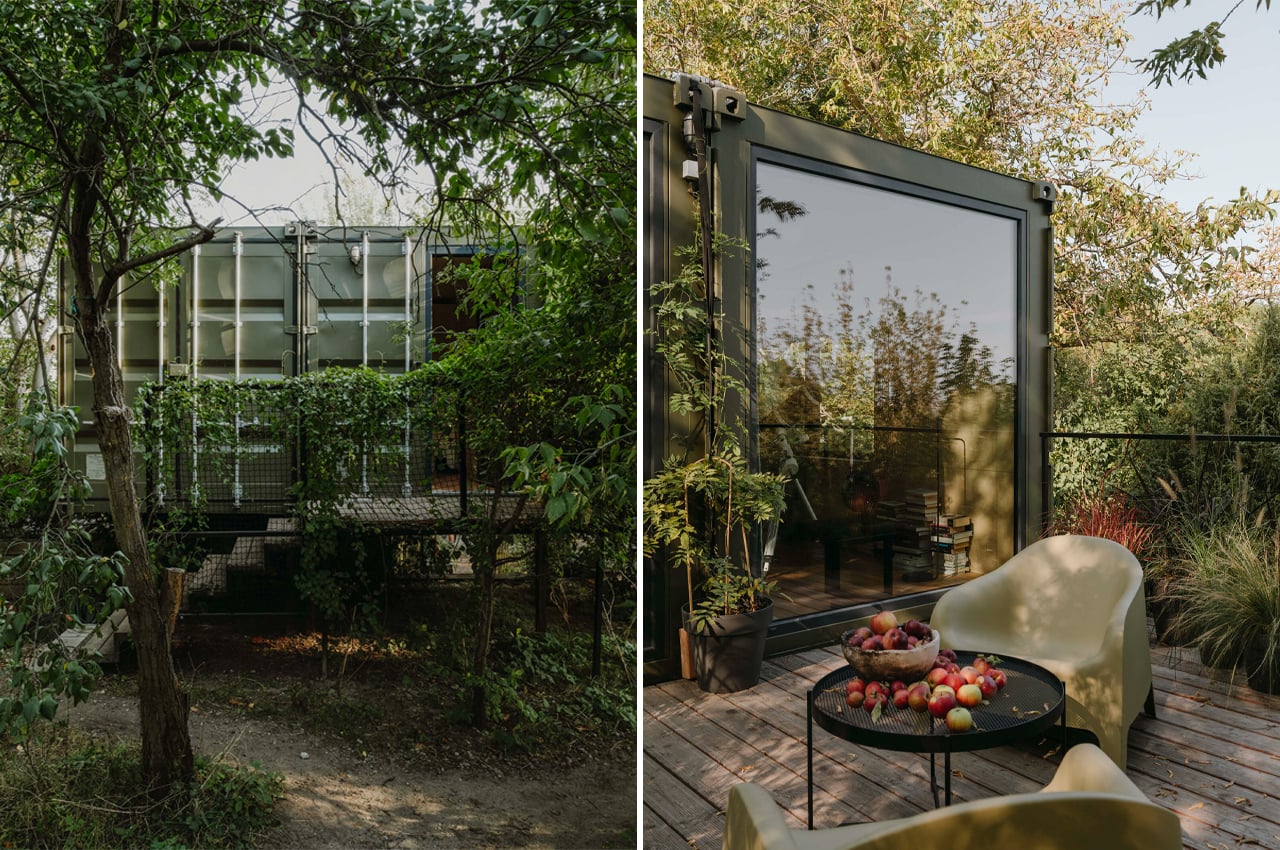
Designed as a prefabricated tiny home comprised of two disused freight containers, Portable Cabin is a 55m2 mobile home and office located in Poznan, Poland. Situated above a small creek, Wiercinski Studio’s Portable Cabin was prefabricated offsite before landing in the lush gardens of Poznan’s Szelagowski Park.
Why is it noteworthy?
The Portable Cabin from Wiercinski Studio is a mobile tiny home comprised of two disused shipping containers. When it comes to transforming shipping containers into homes, you get the best of both worlds. On one hand, you have yourself a homey, tiny cabin that can cozy into any small corner of the world like it’s been there all along. On the other hand, most architects accommodate a mobile lifestyle when designing shipping container homes, outfitting the piece of cargotecture with wheels and a trailer.
What we like
- The living spaces of the Portable Cabin are framed by birch plywood panels
- Features discreet army green facades made from trapezoidal sheet metal
What we dislike
No complaints!
The post Top 10 tiny homes of April that are the sustainable micro-living setups you’ve been searching for first appeared on Yanko Design.
from Yanko Design


0 Comments